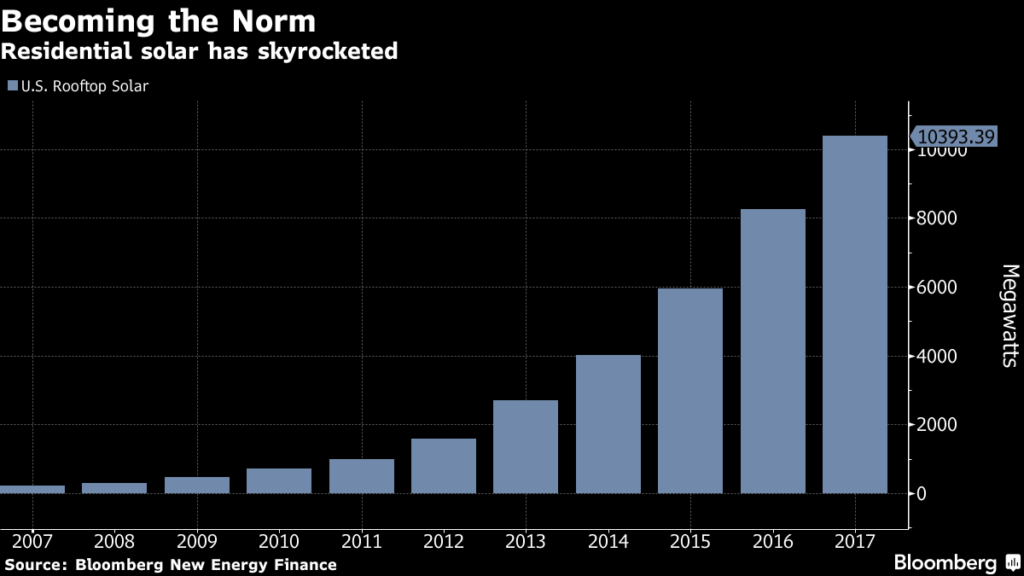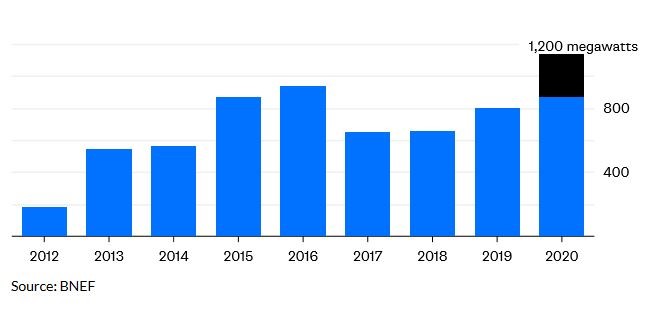
On May 9th, the California Energy Commission announced that from 2020 all new low-rise residential buildings must have built-in solar power system.
California is the largest state in the United States. If it were a country, it would have been the world’s 5th largest economy. California is leading US development in sustainability and decarbonization. California target to slash carbon emissions by 40 percent by 2030.
The decision is not as controversial as one can think, since growth and demand for residential solar power systems is strong already and is expected to continue. The US has 10,4 gigawatts of installed residential solar power today. An increase of six times over the last five years. California is building c80,000 new homes per year. Every fifth installs solar power. The decision is rather controversial since it is the first state, and the first country in the world, which forces households to install residential solar power on new homes. The state argues that despite the rapid development in recent years they need to increase the efforts in order to reach emission targets, and given the fact that solar power is economic viable today it makes sense. It is clear that last year’s rapid growth in residential solar power has no explanation in any green movement, rather an economic movement. Prices have fallen, which is somewhat about technological progress, but mostly economies of scale.
Solar companies like SunRun, Vivint Solar, First Solar, etc. have had a strong development since the news. BNEF (Bloomberg New Energy Finance) estimates that installed solar power capacity will increase from 650 megawatt this year to c900 megawatt 2020. With the new set of rules, the market is expected to get a boost by the new directives that increases installations by 200-300 megawatt to 1,200. That is positive. But for whom?

It is not only solar power providers that benefit. Today, equipment is one-third of the investment. The rest is engineering, construction and other. On the contrary, there is a commoditization of equipment that leads to continued price pressure. It is rather in other areas, such as installation and services, where you can find value. The news is also positive from a PR and policy perspective. More states and countries may follow in the long term.
Another issue that is not highlighted is the fact that the state today has overcapacity of electricity during the day, but not in the evening and night. This means that wholesale prices during the day are depressed which makes the calculation for solar power worse. The opportunity to store energy on the day when it is not demanded and prices are low, and vice versa at night, is the next step in technological cost efficient development.
From an environmental perspective it is still good news. But everything is about economy. From a dollar per installed megawatt perspective it would probably be smarter if you made the same investment in solar utility parks. For comparison purpose, the expected increase of 200-300 megawatt in 2020, corresponds to ONE larger solar power park. But from the regulator’s perspective, one does not necessarily exclude the other. That is, this decision does not go against the quest to expand solar power parks as much as possible.
The authorities argue that there are economic arguments behind the decision. Installing residential solar power today costs about $ 9,500, while it takes about 15 years to make a cost saving of the same size. Since the expected life of a solar power system exceeds 15 years it’s a rational long term investment. On top of that you have environmental gains. They are seen as a pure bonus nowadays.



 asda
asda